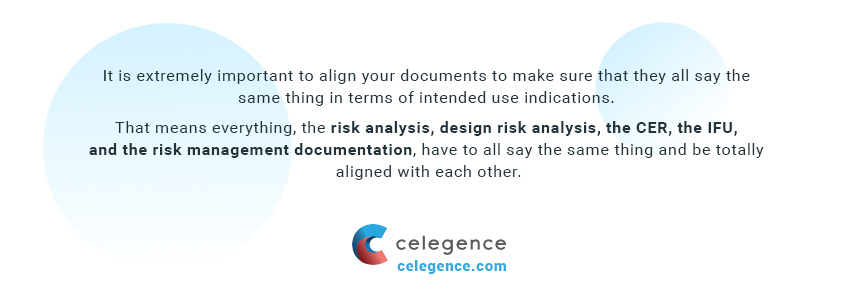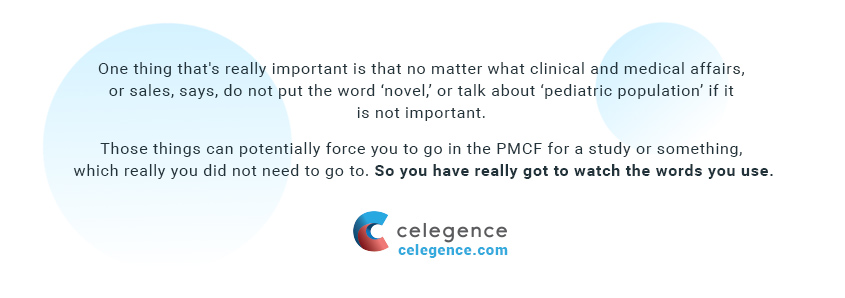
Dr. Greg Shipp’s Q&A on MDR Non Conformance
Dr. Greg Shipp is the Director, Global Medical Devices/Clinical Evaluation Group at Bausch Health Companies Inc. who provides leadership to the Clinical Evaluation Group, including authoritative opinions and answers to medical-based questions concerning the clinical evaluation of medical devices for submission of clinical/regulatory documents to global regulatory authorities.
Effectively handling non-conformances in compliance with the new EU MDR is the biggest challenge for many medical device organizations. During our webinar titled “Taking Advantage of the EU MDR Delay in Uncertain Times: Optimizing Your Medical Device RA/QA Strategy”, Dr. Greg Shipp spoke specifically about the top 2 MDR non-conformances and how medical device organisations should respond to them.
It is very important for medical device organizations to determine the underlying causes of the non-conformances and take preventive action to eliminate the cause of potential nonconformities. In the Medical Devices Industry, these non-conformances can lead to serious problems, therefore, the way of handling such problems is important. Here are a few tips for dealing with them, or being proactive to mitigate them.
Why should you watch this video?
This video outlines two leading non-conformances that are seen in MDR submissions, in particular Clinical Evaluation Reports, and how the manufacturers should respond to them in compliance with the EU MDR.
- PMCF activities and studies
- Clinical evaluation and clinical evaluation reports
A full transcript of Dr.Greg Shipp’s Q&A is available to download (and to read below) and just press play to watch the clip now.

Claim Your Free EU MDR Checklist Now!
Make sure you and your business are compliant with the new EU MDR. Get our 23 page checklist for actionable technical documentation requirements.
It’s interesting, we all found out that the date of application was actually going to be a year later, so I thought we’re going to have all this extra time to do things, get things together, and we do. But we also thought we are going to be able to go on vacation with all this extra time, right?
The truth is that we’re working harder than we have, and getting that extra year is not really something that is going to decrease the workload, if anything, it’s increased. If you have a designated notified body and you’re already sending in MDR submissions, and with the date of application being a year later, one thought was that you didn’t have to have your QMS systems up to the right level. But if you are submitting MDR submissions, you have got to have your QMS system right, or you cannot submit and actually get approval.
Practical Items About Non-Conformance
I just wanted to mention some practical things about non-conformances that are coming in from MDR submissions. Queries are coming in, and there is a lot of work to do because of these queries. I think the notified bodies and the companies are actually learning things, and right now, their notified bodies are really making sure that the MDR is being followed. So now, we have got a limited data set of 30 to 50 companies or so, from regulatory consultant groups, the industry, and notified bodies. And I want to concentrate on the first two leading issues that we see, which account for 30 to 50 percent of all the non-conformances.
The issues other than that, say, issues three through ten, are things like:
- UDI
- Labeling questions
- The strategy for regulatory compliance (which has to be part of the QMS system)
- The person responsible for regulatory compliance
- Vigilance
- CSPRs
- Risk documentation defining the residual risks which come into your PMCF activities.
So, the first two leading non-conformances are, not surprisingly, number two being clinical evaluation and clinical evaluation reports, and number one being PMCF activities and studies. So, we will deal with clinical evaluation first. One of the main things coming in as queries is being able to show that your claims are supported by clinical evidence. That has to be shown throughout the CER, and must show that the clinical evidence is measurable and objective. There is now a MDCG (Medical Device Coordinated Group) document, number five and number six, that actually go into clinical evaluation equivalents, and they also go into how those are going to be looked at by the notified body.
Post Market Clinical Followup (PMCF)
Defining the rationale and the reason that you were actually doing the activity that you are talking about, are you going to do a survey? Are you going to do a retrospective data analysis? Are you going to do a prospective analysis? Are you going to do a prospective clinical study? You need to be able to speak on, and be clear about, what you’re doing and why you’re doing it. Things are based on the classification of the device and how many clinical studies you’ve already done. And by building that argument, you are able to support your PMCF activities.
Timelines for the PMCF – You have got to really justify what you are putting down as the ongoing reports that you need to do, as this is an ongoing process and the PMCF has to be measurable. So, if you are doing a survey, then you have got to define really what information you are getting and why it is significant for the device. And of course, with data analysis and studies, you have got to have a protocol which is as strong as a scientific protocol. There is also an MDCG for the PMCF, both 07 and 08, which go into great detail about how to actually use the information.

Importance of Document Alignment
There are some quick queries that have arisen with clinical evaluation. It is extremely important to align your documents to make sure that they all say the same thing in terms of intended use indications. That means everything, the risk analysis, design risk analysis, the CER, the IFU, and the risk management documentation, have to all say the same thing and be totally aligned with each other. That is something that has come up.

Claim Your Free EU MDR Checklist Now!
Make sure you and your business are compliant with the new EU MDR. Get our 23 page checklist for actionable technical documentation requirements.
The Quandary Between CEP and CER
As you guys know, the CEP now has a part that is the (CDP) Clinical Data Plan. Basically, that is something where you start with exploratory studies, all the way through to the pivotal studies. And that has to be defined in a way where you’re documenting exactly which studies are doing what, and defining clearly what that plan is.
There is an interesting thing, a quandary sometimes between the CEP and the CER. That quandary is that you need to have the CEP written before the clinical pivotal trials are done. And with the CER, it may be a year and a half later until you write that. So, things may happen between that time. You may change the indications, you may change the number of devices, and certainly the device family, where the CEP did not have that. So basically, our thought is that you do not want to change the CEP because it is the plan moving forward, but there will be changes and you need to document those in the CER stating why you made those changes.
The CER is a standalone, and you have to have standards, and nonclinical testing that is documented there. You really have to do precise GSPRs with clinical evidence for the GSPRs, and why you feel like you are compliant with them, as well as for the timing of the next CER.

Final Items to Consider re Non-conformance
One thing that’s really important is that no matter what clinical and medical affairs, or sales, says, do not put the word ‘novel,’ or talk about ‘pediatric population’ if it is not important. Those things can potentially force you to go in the PMCF for a study or something, which really you did not need to go to. So you have really got to watch the words you use.
And then, in terms of the clinical investigations, if you have old studies that are from back in 1995, for example, they may not be compliant with 14155. So that is just something to think about. How are you going to handle that? There are going to be gaps, and you have got to think about justifications and rationales for why that is OK.
There are also new MDCGs that just came out. I won’t talk about the clinical performance, but that is in MDCG 09 and 10, and then one that just came out in MDCG 13, which shows what the notified bodies are going to be looking at in terms of clinical evaluations. That is my presentation of the non-conformances.


